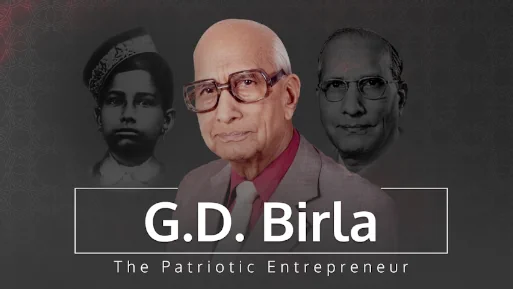A catalyst for technical excellence
02 June, 2014 | The Machinist
ShareThe Machinist
May 2014
With energy conservation becoming a strategic business imperative, the Corporate Technical and Energy Services has evolved as a preferred in-house technical and energy conservation solution provider for the Aditya Birla Group of companies.
Services offered at CTES
- Energy conservation
- Debottlenecking and troubleshooting of Group Captive Power Plants
- Electrical Power System Analysis
- Industrial Engineering services (including Material Handling, Layout planning, Productivity and Manpower
rationalisation, etc.) - Value Stream Mapping
- Water conservation through Pinch Analysis
- Support to Units on regulatory affairs like PAT, RPO, etc.
The world agrees that energy conservation has immense potential and has transformed radically with economic globalisation. Few years ago, energy conservation was something good to do. With the energy prices soaring, today it has become a requisite for survival and a much powerful imperative. Energy finds its place in one of the top three operating costs and thus constitutes a key strategic area for cost reduction. For over two decades, the Corporate Technical and Energy Services (CTES) has evolved as a preferred in-house technical and energy conservation solution provider for the Aditya Birla Group of companies. Equipped with state-of-the-art measuring and analysing tools, it is a one-stop resource for v2arious services*.
"Adopting Energy Management System of ISO 50001:2011 is one way to inculcate an energy-efficient culture. It not only provides an improved bottom-line, but benefits are altruistic. Energy conservation is a part of our Sustainability Vision– I work earnestly towards it"
— Jagrat Mankad, Head – Corporate Technical and Energy Services
According to Jagrat Mankad, Head – CTES, decision-making strategy should incorporate energy efficiency as fundamental value. Mankad who is driven by the goal of institutionalising energy efficiency culture across Aditya Birla Group believes that this culture can be expanded by educating stakeholders on the importance and significance of energy conservation.
"Adopting Energy Management System of ISO 50001:2011 is one way to inculcate an energy-efficient culture. It not only provides an improved bottom-line, but benefits are altruistic. Energy conservation is a part of our Sustainability Vision– I work earnestly towards it," he says.
A differentiated service provider
CTES adheres to the principles of accuracy, completeness, conservativeness, relevance and transparency. The approach CTES adopts in addressing the service is unique. Key enablers for its position as a differentiated service provider are the following:
- Data collection and analysis is done prior to the visit.
- Validation of baseline data by actual measurement.
- Data logging for minimum one cycle of operation is carried out where operating pattern fluctuates over time. We do not depend on snapshot readings
- Involving the plant technical team in formulating the encon projects – team work.
- Handholding the Unit till successful implementation of the scheme.
- Use of simulation softwares to predict performance.
- Robustness of the scheme is scrutinised critically by seniors who are expert certified M&;V professionals.
- Hands-on training to the plant technical team during the course of the visit.
Established in 1990, the Corporate Technical and Energy Services (CTES) is a sister concern of the Aditya Birla Science and Technology Company based out at Taloja, just outside Mumbai, India. It is a corporate function of the Aditya Birla Group of companies. Through its multidisciplinary team of experts, CTES provides various services across the Group for technical problem solving and cost reduction. In addition, CTES is actively involved in sharing knowledge and experiences through Group-wide benchmarking studies, organising corporate technical seminars, and publishing newsletters and white papers on various technical issues. It also extends project execution support to Group units.
Implementation and benefits
With the advent of the internet era and Aditya Birla Group's quest for knowledge learning, awareness of energy consciousness has improved significantly at the plants. Moreover, with the rolling out of the Energy Conservation Act 2011 and other regulations, Units have proactively beefed up energy conservation activities. Naturally, the task of identifying energy conservation potential has become increasingly challenging. In spite of that, CTES was able to identify energy-saving potential duly accepted by its customers, to the tune of Rs75 crore/annum in FY13-14.
Major credit goes to the CTES's vibrant and finest talented personnel who are highly trained professionals and have over a period of time, developed innovative solutions and saved millions of rupees in operating costs for Aditya Birla units. The CTES team has BEE-accredited energy auditors, value specialists, certified M&;V professionals, certified lead auditors of ISO 50001:2011 and business management graduates.
Way forward
In our quest to improve our effectiveness on a continuous basis, CTES adopted the Peter Drucker business modelling tool to carve out the roadmap for future. The blueprint will assist Aditya Birla Group in achieving Group Vision through a three-prong approach – Excellence in Energy Performance Management, Innovation in Cost Reduction and Value Optimisation.
Case Study 1: Conditional Optimisation
Objective: Reduction in Bunker Oil Consumption.
Challenges: 28TPH capacity Hog Fired boiler was operating with 15 percent Oxygen level in the flue gas (which is OK for the kind of the fuel used). The boiler grate needs to be cleaned every day which takes about four hours. During which Bunker Oil is used as a fuel. A Sankey diagram of the Boiler losses was made.
Result achieved: Bunker Oil needs less air as compared to Hog/Bio mass. The CTES team suggested the Unit to optimise the Oxygen level and bring it down to five percent at the time when the Grate is cleaned. Reduced losses from the Dry Flue Gas have resulted into an annual saving of Rs150 lakh/annum without any investment.
Case Study 2: Intelligent operation
Objective: Improvement in Heat Rate of Turbine.
Challenges: 25 MW turbine installed with 8 air cooled condensing fans, was operating at 23.57 MW capacity with five fans. Turbine exit pressure was 0.18 Bar (a). Increasing the number of fans in operation to improve exist pressure would increase the auxiliary power consumption.
| Sr. | Parameter | Unit | Turbine # 2 (Before) | Turbine # 2 (After) |
| 1 | Turbine Load | MW | 17.8 | 17.3 |
| 2 | Specific Steam Consumption |
TPH / MW |
4.16 | 4.10 |
| 3 | Turbine exhaust Pressure |
Bar (A) | 0.18 | 0.14 |
| 4 | Turbine Heat Rate | kCal/ kWh |
2597 | 2561 |
| 5 | Number of ACC Fans in operation |
Nos | 5 | 6 |
| 6 | Speed of ACC Fans | RPM | 1260 | 1153 |
| 7 | Total ACC Fan power consumption |
kW | 405 | 403 |
Result Achieved: CTES team analysed actual cooling required and through in-depth analysis, recommended to operate six fans with reduced speed. As shown in the table below, it improved the turbine exit pressure and reduced the heat rate, providing an instant saving of Rs50 lakh/annum with no investment.






